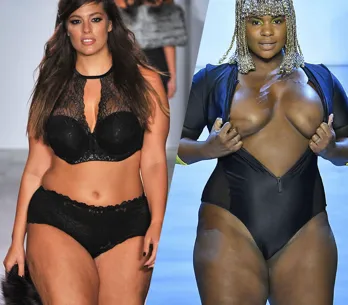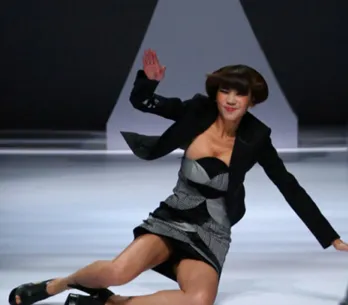Fashion has got a bit of a bad rap for being one of the hardest industries to break into, so starting out is bound to seem scary.
If you're thinking of getting your hands on that dream styling career then you've landed in the perfect spot. We got chatting to fashion stylist Alex Longmore to find out just what it takes to do the job.
Surrounding yourself with clothes sure seems like the ultimate career, especially when it includes dressing celebrities for events, prepping outfits and travelling the world, but what about the not-so-glamorous face of fashion? Lugging suitcases around cities, keeping up with trends, dealing with demanding clients. Think you've got what it takes?
With over 16 years of experience in the industry, Alex has the best advice on how to get your name out there, working for free and learning the ropes...
Starting out
"Every industry is hard to get into and I think with lots of tenacity and hard work anyone can get where they want to be in life. The fashion industry has got such a bad rap for being the hardest place to gain work but it’s not necessarily true.
"The fashion industry is huge and there are infinite possibilities. I was lucky, I always knew from an early age I wanted to be a stylist so I did lots of work experience before landing my dream job which was a lot harder than I ever knew possible and not so glamorous."
To study or not to study?
"I often recommend that school leavers do a course because it gives them maturity and a deeper understanding. On the whole I’m not a fan of long university courses on fashion as I think they are a waste of time, as you need to learn directly from professionals in the industry.
"The courses I run at my fashion school, Style School are all taught by top industry professionals, I wanted it that way so my students make contacts, learn from the best and know what really goes on first-hand. I always say learning to be a stylist is like being a car mechanic; you have to do an apprenticeship under someone who knows the nuts and bolts."
Starting from the bottom up can be hard on your self-esteem but in the end, those that stick it out and do so with a good attitude, are the ones more likely to earn the opportunities.
Work experience and internships
"Don’t just accept everything that comes your way. I think it's good to be choosy but I do believe that every experience in life is a learning curve. I had some shocking work experience but it made me decide what I liked and didn’t like from what I saw in the industry.
"I am always giving my graduates advice about work experience and some of the stories I have heard on what is asked of them are shocking, but I think nowadays there are rules in place for people being taken advantage of."
So next time you're sat on the floor in the fashion cupboard, organising returns and battling with coat hangers, take a deep breath and remember that this is all part of understanding the not-so-glamorous side of the industry.
Organisation and working under pressure are a huge part of the job and dealing with the admin is a sure-fire way to tell if this is the career for you.
Look to assist someone for six months to a year so you can really get into the role and work out your strengths and weaknesses.
Networking and getting your name heard
"By networking, being super polite and always doing your best you'll have the best chance of gaining industry recognition. What students and those starting out don’t realise is the fashion industry is a really small place and everyone knows everyone. Word gets around if you're good or bad!
"Social networking is a really good idea as is having a blog. Everything in this day and age is online and to have a presence out there in the cyber world can make a huge difference."
Get tweeting, pinning and Instagramming people!
Common misconceptions
"A lot of people think the job is way more glamorous than it is, that it’s all about shoots and yards of beautiful fabric, well let me tell you, it isn’t. It’s all about returns, returns, returns. I spent the first four years of my career in the fashion cupboard learning the ropes. I don’t think I saw the light of day for that whole period.
"Every day is different. It’s a total mixture but what doesn’t change is the ferocity of the work – it's intense."
No such thing as a typical day when you're a stylist then!
'Shoot the stylist' - dealing with criticism
"Don't focus on the negatives and try not to worry about what others have to say about your work. I hope I have a sense of humour about it. When I am on a difficult shoot I try to remember that I am not performing anything as important as brain surgery. As long as I'm confident in my ideas and the client is happy, that's all that matters."
You get a lot of knock-backs so a thick skin definitely helps. Confidence is key - got it?
The styling process
"Normally the process starts by word of mouth, from the photographer, agent, client or publication. I will then talk at length about what it is they are looking for and discuss the brief of the job. I go away, prep the story and keep them in the loop in the process. Working with a team means you are just one part of the process. It’s a real team effort to get a finished look."
Make-up artists, photographers, stylists - they're all in it together.
Building your portfolio
"You can start building up your work by testing with people that are starting out at the same time as you. Photographer assistants and hair and make-up artists are always on the lookout to do test shoots. You make so many contacts along the way you just have to keep a contacts book and network."
It's a learning curve
"Learning about fashion is the most important thing you can do and it will constantly inform your creative decisions. Fashion goes full circle and if you know the history of the subject you're half-way there."
Knowledge is power right?
Are you a stylist starting out? Tweet us your tips @sofeminineUK













